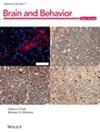Psychometric Properties of the Children's Auditory Perception Test: Reliability and Validity Analysis
Abstract
Purpose
This study aimed to revise and investigate the validity and reliability of the Children's Auditory Perception Test (CIAT), which was developed to evaluate auditory perception skills.
Methods
The study included 100 cochlear implant (CI) users between the ages of 2 and 15, and 80 individuals with normal hearing. In the first session, participants underwent the Turkish Early Language Development Test (TELD-3) and audiometric assessments. The second session involved administering age-appropriate subtests from the CIAT battery. Subtest reliability was evaluated using internal consistency and test–retest methods. We measured the construct validity by examining the relationships between subcategories. Also, we evaluated known-group validity and predictive validity.
Results
The reliability analysis of the CIAT indicated high internal consistency, with a Cronbach's alpha coefficient of 0.913 for all 17 tests. Subcategories demonstrated reliability ranging from acceptable to excellent (α = 0.741–0.973). Significant differences were observed in auditory perception scores between children with CI and those with normal hearing (p < 0.005), demonstrating the known-group validity of the test across different age groups. Multiple linear regression analysis revealed that factors such as age group, gender, special education duration, receptive and expressive language ages, CI duration, and usage status accounted for 78% of the variability in auditory perception scores (R2 = 0.78), thus testing the predictive reliability of the model.
Conclusion
A valid and reliable test battery that evaluates auditory perception skills at different difficulty levels across a wide age range (2–15 years) has been introduced to the literature. However, a notable limitation is that this battery does not include auditory processing assessments, such as speech-in-competition (noise/babble) tests, which could enhance the comprehensiveness of the evaluation.


 求助内容:
求助内容: 应助结果提醒方式:
应助结果提醒方式:


